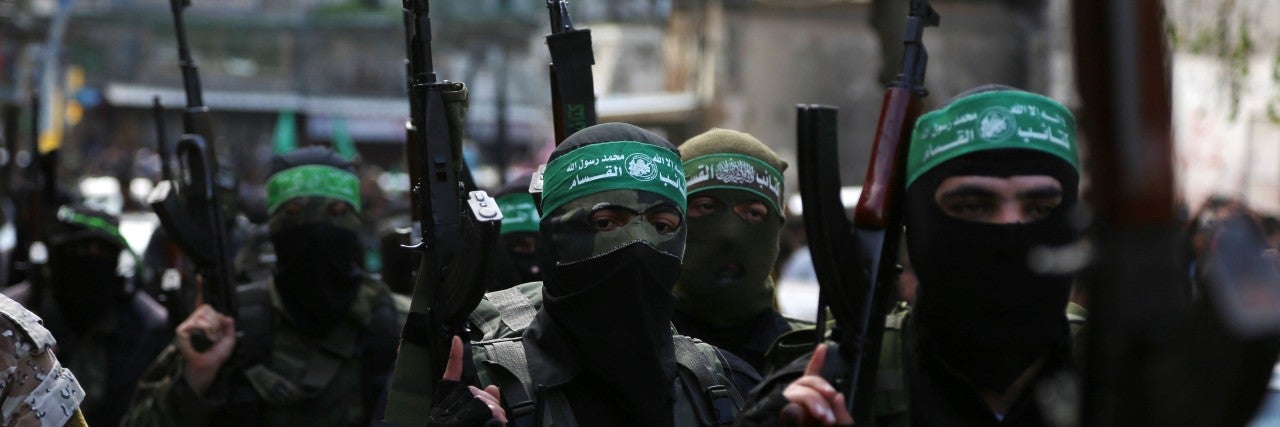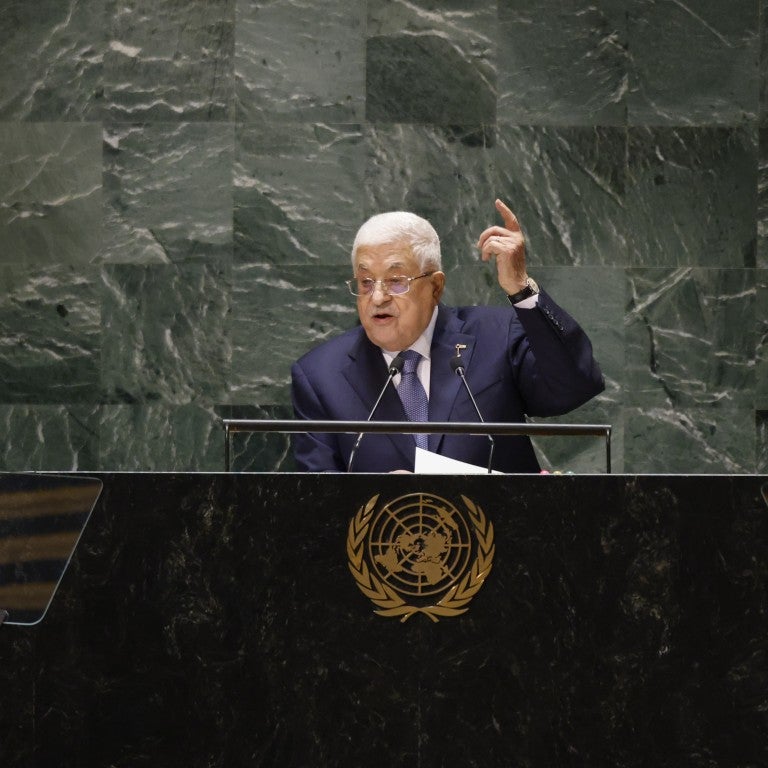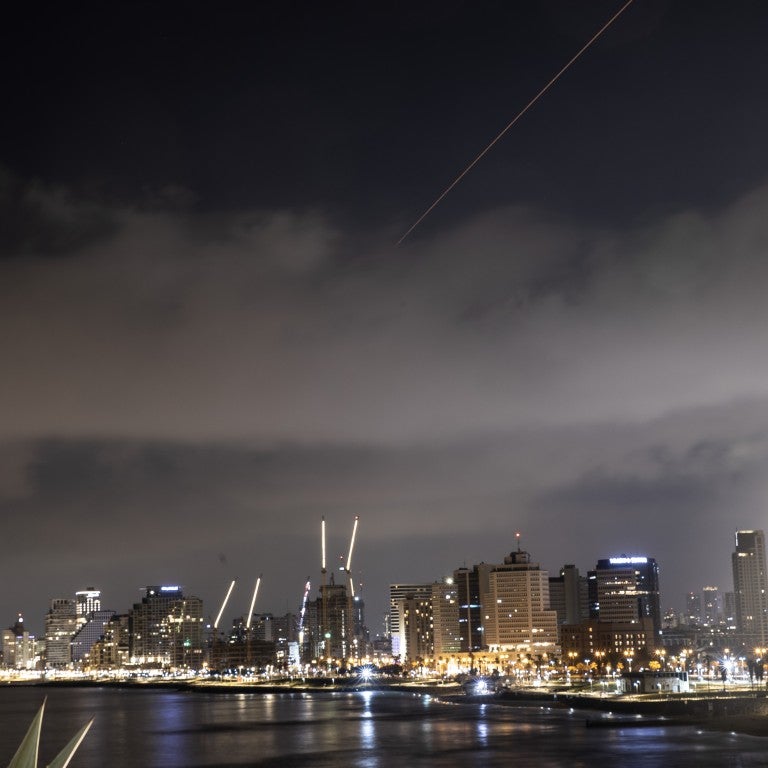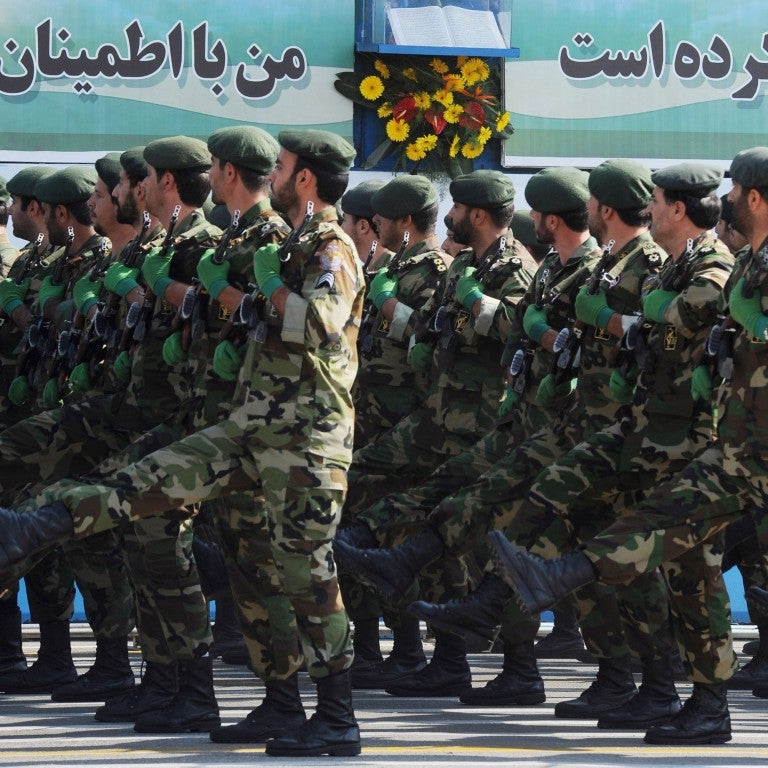December 27, 2023
At 6:30 a.m. on Saturday, October 7, Hamas, the Iran-backed terror group controlling Gaza, launched an unprovoked and vicious surprise attack on Israel. Using rockets, paragliders, boats, motorcycles and other vehicles, and whatever other means they could, terrorists infiltrated Israel with one goal—to murder and kidnap Israelis.
Over 1,300 Israelis have been killed and close to 12,000 are wounded. 129 hostages are being held by Gaza. More than 12,500 rockets have been fired at Israeli towns and cities. Israeli families are huddled in bomb shelters.
Here is what you need to know about Hamas and its attack on Israel.
What is happening?
The world awoke on Saturday, October 7 to horrific images of brutal violence from Hamas terrorists: indiscriminate shooting of Israeli civilians, videos of alleged kidnappings, and celebrations of death and destruction. Shortly after, Israeli Prime Minister Benjamin Netanyahu declared that Israel “is at war.”
Since that fateful day, Israel has responded with an air, sea, and land military campaign dubbed Operation Swords of Iran, with the stated mission to dismantle Hamas, secure the release of the hostages, and prevent a repeat of the October 7 attack.
On October 27, Israeli ground forces entered the northern part of the Gaza Strip. A temporary ceasefire between Israel and Hamas took effect from November 24 to 30. The temporary ceasefire agreement in November saw 105 civilians released from Hamas captivity, including 81 Israelis, 23 Thai nationals, and one Filipino.
As of December 27, IDF Chief of Staff Lt. Gen. Herzi Halevi said that the Israeli military is expanding its operations in southern and central Gaza and is close to dismantling all of Hamas’ battalions in the northern part of the territory and has warned that the war will last “many more months.”
“There are no magic solutions, no shortcuts in the thorough dismantling of a terror organization, but stubborn and determined fighting. And we are very, very determined,” Halevi said.
The IDF says that it has killed some 8,000 Hamas terrorists in Gaza and another 1,000 during and immediately after the October 7 attacks. It is estimated that Hamas' terror army is comprised of 24 battalions, with a total fighting force of some 30,000. So far, 12 Hamas battalions in northern Gaza are close to being destroyed. Four more are believed to operate in central Gaza and the rest in southern Gaza, where the majority of Hamas' leadership is believed to be hiding since the war began.
What is Hamas?
Hamas, or Harakat al Muqawama al Islamiyah, is a Sunni Islamist terrorist organization that operates as the de facto leader of the Gaza Strip. Founded in 1988 during the First Intifada as an offshoot of the Muslim Brotherhood, Hamas set two long-term goals, articulated in its charter: the end of the Jewish state and the creation of an Islamic state from the Jordan River to the Mediterranean Sea. Its more immediate goal is the “liberation of Palestine” and the “return” of the Palestinian people.
Who supports Hamas?
While its origins are with the Muslim Brotherhood, Hamas has reportedly been funded, armed, and trained by the Iranian Revolutionary Guard Corps (IRGC) since the early 1990s. Hamas even opened an office in Tehran in the 1990s. Despite its longstanding ties with Tehran, the Palestinian terror group has had a rocky relationship with the Islamic Republic in recent years. In 2012, Iran cut off funding to Hamas after it refused to support the al-Assad regime in the Syrian Civil War.
But Iran resumed financial assistance to Hamas in 2017. “Relations with Iran are excellent, and Iran is the largest supporter of the Izz ad-Din al Qassam Brigades [Hamas’s military wing] with money and arms,” Yahya Sinwar, a senior Hamas military leader, said in 2017. In 2020, the U.S. State Department reported that Iran had provided more than $100 million annually to Hamas and Palestinian Islamic Jihad.
Hamas has used Iranian support to launch several wars against Israel from its base in Gaza, including in 2008, 2009, 2014, and 2021. In each of those attacks, thousands of rockets were fired by terror organizations toward Israeli population centers. In total, dozens of civilians have been murdered via rocket attacks. resulting in dozens of civilian deaths. Hamas has also used Iranian know-how to help build its extensive network of tunnels throughout the Gaza Strip and underneath the Israel-Gaza border to conceal weapons and kidnap Israeli civilians. Hamas continues to develop itself militarily, for instance, launching a commando navy unit that became operational in recent years. Hamas also is currently holding four Israelis in Gaza - the bodies of two Israeli soldiers who were killed in 2014, and two civilians who crossed the border.
According to a report in the Wall Street Journal, Iran's IRGC helped Hamas planned the attacks on Israel and green-lit them in a meeting in Beirut, Lebanon last week.
Gilad Erdan, the Israeli ambassador to the United Nations, said: “We know that there were meetings in Syria and in Lebanon with other leaders of the terror armies that surround Israel so obviously it’s easy to understand that they tried to coordinate. The proxies of Iran in our region, they tried to be coordinated as much as possible with Iran.”
How did we get here?
Anti-Israel and antisemitic terrorist organizations located in the Gaza Strip have fired tens of thousands of rockets and mortars at Israeli civilians over the last two decades. The territory has been controlled by the Iran-backed antisemitic terror group Hamas since 2007. Hamas is one of the terror groups that launched rocket attacks on Israel. It also permits other such groups operating in the Gaza Strip, like Palestinian Islamic Jihad, to do the same.
During the May 2021 conflict in Gaza, Hamas and Palestinian Islamic Jihad fired over 4,300 rockets at Israeli civilians. In August 2022, Palestinian Islamic Jihad fired over 1,100 rockets at Israelis during the three-day escalation, according to the Israel Defense Forces.
In April, nearly three dozen rockets were fired from southern Lebanon. The barrage of rockets was the largest such attack from the territory of Israel’s northern neighbor since the 2006 Second Lebanon War. Click here to read more about the connection between Hamas and Hezbollah, as well as rocket attacks from Lebanon.
In May, Israel launched Operation Shield and Arrow to neutralize Palestinian Islamic Jihad targets in Gaza after over 100 rockets were launched into Israel. You can learn more about the Gaza hospital strike here.
The violence stemming from Gaza is also linked to increasing terrorism in the West Bank, including Palestinian Islamic Jihad’s efforts to export its knowledge to the West Bank in order to carry out additional terror attacks against Israel. As such, Israeli security forces have been conducting near-daily counterterrorism operations.
Over the past year, Israel has experienced one of its deadliest periods of terrorist violence in Israel since the Second Intifada in the early 2000s.
What is the Gaza Strip?
The Gaza Strip is a 141-square-mile Palestinian enclave located near Israel’s southwestern tip. Bordering Egypt, Israel, and the Mediterranean Sea, the territory is home to over two million Palestinians. Its name is derived from the ancient city of Gaza, the largest city in the territory.
From 1948 to 1967, the Gaza Strip was occupied by Egypt, which took control of the territory during the 1948 Arab-Israeli War, also known as Israel’s War of Independence. As a result of the 1967 Six-Day War, Israel gained control over the Gaza Strip from Egypt.
After Israeli withdrawal in 2005, the territory has been under de jure control of the Palestinian Authority, the governing body of the Palestinians, but de facto control by the Palestinian terrorist organization Hamas, which violently ousted the Fatah-controlled Palestinian Authority from the territory in 2007.
What is Iron Dome and how does it save Israeli and Palestinian lives?
Iron Dome is an air defense missile system operational since 2012 that was developed by two Israeli firms - Rafael Defense Systems and Israel Aerospace Industries - with support from the U.S. Emphasis on defense. It is never used to attack or retaliate and poses no threat to Palestinians.
The strongest air defense system in the world has three components: a radar that detects incoming rockets; a command-and-control system that determines the threat level; and an interceptor that, if the system determines human lives or infrastructure are at risk, seeks to destroy the incoming rocket before it strikes.
According to Israeli officials, it has been about 90% effective in stopping short-range rockets fired by Hezbollah terrorists next door in Lebanon or Hamas and Palestinian Islamic Jihad terrorists in neighboring Gaza. The system protects Israelis of all backgrounds and faiths.
For example, when Hamas and Palestinian Islamic Jihad fired more than 4,300 rockets from Gaza into Israel in May 2021, more than 1,500 targeted heavily populated areas, including Israel’s largest city, Tel Aviv. Iron Dome shot down more than 90% of those rockets, greatly reducing the death toll. Even with Iron Dome, about a dozen Israelis were murdered. That number would have been much higher without the Israeli missile defense system.





